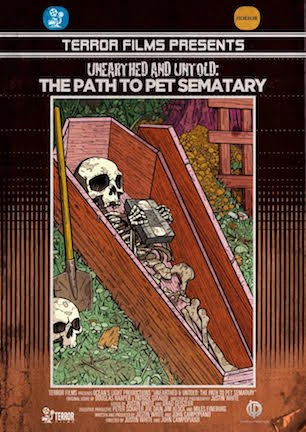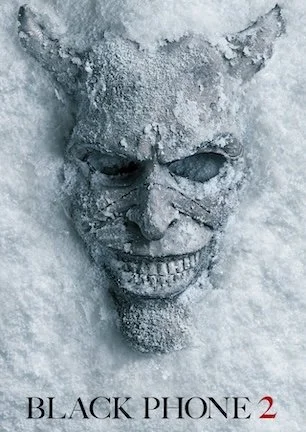Studio: Synapse Films
Director: John Campopiano, Justin White
Writer: John Campopiano, Justin White
Producer: John Campopiano, Justin White
Stars: Mary Lambert, Dale Midkiff, Denise Crosby, Miko Hughes, Blaze Berdahl, Brad Greenquist, Susan Blommaert, Andrew Hubatsek, Peter Stein, Lance Anderson
Review Score:
Summary:
Cast and crew reflect on making the seminal Stephen King movie “Pet Sematary."
Review:
Perhaps you already knew that a thin teenage boy actually played the memorable role of Rachel Creed’s meningitis-mangled sister Zelda. But had you heard about the day NBA legend Kareem Abdul-Jabbar spent on set as a casual observer?
On a purely production level, “Unearthed and Untold: The Path to Pet Sematary” may be a home video special feature in full-length documentary form. Yet its wealth of insider info is so chock full of “I never knew that” anecdotes about making the movie, touchstones are tickled whether the viewer is a “Pet Sematary” obsessive or simply an intrigued film fan.
Barring the excusable exceptions of Stephen King, who rarely, if ever, participates in recorded retrospectives, and the late Fred Gwynne, every principal person associated with the production is interviewed or otherwise represented. Of course that includes big guns like director Mary Lambert as well as stars Dale Midkiff and Denise Crosby. But co-directors John Campopiano and Justin White leave no Micmac burial stone unturned in tracking down everyone from the Maine local who played young Jud Crandall in a single flashback to the car karaoke truck driver who killed Gage, and every notable extra in between. Even genre icon Dee Wallace contributes relevant notes, as does Heather Langenkamp, who shares a charming recollection about the role “Pet Sematary” played in her husband’s marriage proposal, and neither notable actress is actually in “Pet Sematary.”
Deep cut stories become so entertainingly distracting (I had no idea King took inspiration from an actual pet cemetery in Maine, whose owner/creator recalls tasking someone to spray-paint a sign and receiving the now notorious misspelling), it took a full half hour before I noticed “Unearthed and Untold” doesn’t license any “Pet Sematary” clips for use in the documentary. This would be less notable if it actually were a Blu-ray bonus, since viewers would have immediate access to the original film or likely would have watched it immediately prior. But there is an illustrative hiccup when talking heads detail key scenes like Gage’s hand popping out of his fallen casket or Zelda’s chilling “Rachel!” cackle, and the only accompanying visual is a storyboard or artist’s rendition.
With indebted thanks to swing gang and props person Rhonda Carter, “Unearthed and Untold” gets great use from home videos shot during filming, albeit of the blurry VHS variety. These bits, which comprise all of the behind-the-scenes footage “Unearthed” has, don’t contain anything essential or particularly revelatory, though they put some movement on the screen that pans and zooms on static images just don’t have.
“Unearthed and Untold: The Path to Pet Sematary” is divided into six chapter breaks, except included material isn’t quite organized under those headings. Specifics about the stipulation requiring “Pet Sematary” to film in Maine, for instance, are introduced in Chapter Two, even though Chapter Five, “The Maine Character,” devotes its entire segment to the subject.
Composer Elliot Goldenthal tells his tale of scoring the film’s music with Marky Ramone briefly piping up about The Ramones’ end credits song. Yet they are oddly sandwiched between a bit on building the exterior pet cemetery set and recollections of shooting Gage’s death in the “Filming Locations” chapter.
Flow still feels fine. One merely wonders why bother with intertitle cards at all when stories like Fred Gwynne’s second career as a children’s author and heartfelt enthusiasm from everyone’s memories fuel the film with plenty of fascination.
In lieu of a narrator, the doc’s co-directors step in for on-camera contributions to link dots interviewees don’t connect. Justin White is clearly reading rehearsed lines off of cue cards. John Campopiano might be too, although he is better at making his monologue sound like an organic response to a question not actually asked.
While no one should dare question the duo’s commitment, as their passion for “Pet Sematary” is as evident as Cookie Monster’s love of chocolate chips, another pass of polish would kick the documentary up to a higher level of presentation. When Campopiano mentions something like, “I think Stephen King was even quoted as saying,” one wonders if it isn’t his duty as a documentarian to research whether or not King actually did.
Nitpicks are neither here nor there for the most part. Few people will care about details like verifying a quick rumor concerning whether or not George A. Romero was in the running to be “Pet Sematary’s” director. But if we want to truly critique how buttoned up the film is, it bears a footnote that structure could stand for some tightening.
Mattering more than anything is how satisfying “Unearthed and Untold: The Path to Pet Sematary” is as a capsule of the modern horror classic. The documentary only briefly sidebars with inconsequential minutiae, e.g. I’m not sure if anyone needs to know about the sheet rock that went into building a house façade or cares about Fangoria’s set visit scoop because a stringer lived nearby.
But the meat of the movie is so enjoyably informative, flaws are effectively neutered. If you want to revel in as much material about making “Pet Sematary” as is currently documented in film format, or to catch up with cast and crew over 25 years later, you really don’t need anything that “Unearthed and Untold” doesn’t have.
SIDE NOTE: One memory Dale Midkiff doesn’t recount here is that of hitting his head on a nightstand in a scene many fans vividly remember. For anyone curious, Midkiff commented at a “Pet Sematary” screening at the New Beverly Theater in Hollywood, either 2011 or 2012 if I recall correctly, that this is the question he receives most at conventions and Q&As. The answer is yes, he was a committed method actor at the time, to a degree of being willing to harm himself because he didn’t know any better, and deliberately dinged his dome with every bit of the full force seen in that shot.
Review Score: 80






Evidently, “Five Nights at Freddy’s 2” was made for TruFans™ who would rather spend the movie repeatedly reenacting the Leonardo pointing meme.